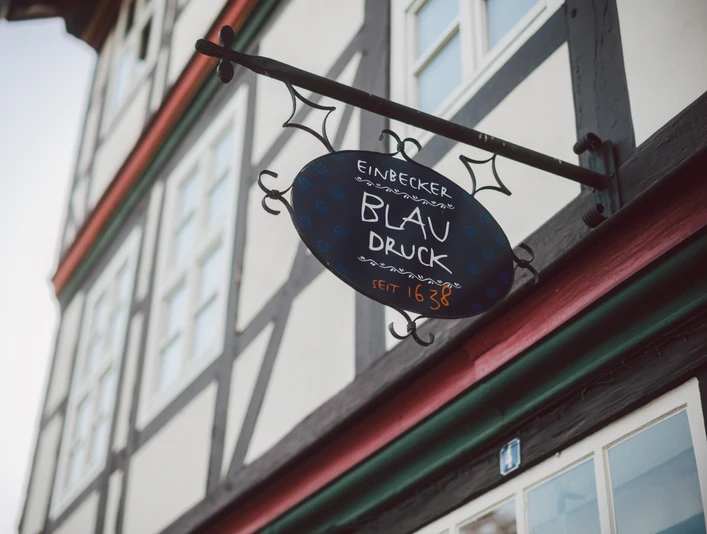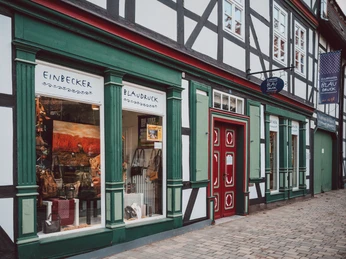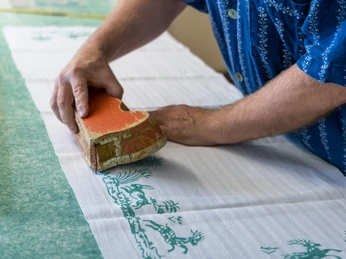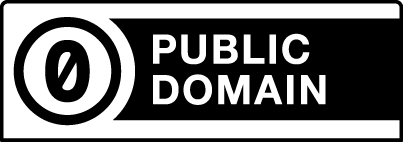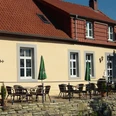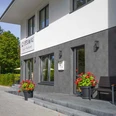- Photos & Map
How would you like to arrive?
- Call
- Description
- Good to know
- Nearby
The workshop and store of Einbecker Blaudruck are located in a historic half-timbered house on Möncheplatz.
The dyer's workshop was founded in 1638 during the Thirty Years' War by Hans Wittram. The son of the company founder first tried his hand at the technique of blue printing around 1700 in order to bring a competitive product to the market to compete with the colorful calico print from overseas. Since then, the reserve printing process has been used to create white patterns on a blue or colored background.
The first printing blocks, also known as models, had to be made from pear wood, which provided the necessary hardness, dense surface and resistance to moisture.
To produce the blue print, the white fabric is first printed by hand with the viscous printing cardboard and the wooden models. The fabric no longer takes on any color in the dye bath at the printed areas and the white patterns become visible after rinsing baths to remove the cardboard.
From 1638 to 2005, the workshop was owned by the Wittram family without interruption, as a result of which more than 800 models have been preserved to this day. Almost all stylistic periods can be found here, from biblical motifs and printing blocks from the Baroque period to the textile patterns of "art deco".
Einbeck Blue Print stillproducesvarious productssuch as runners, bags, scarves, cushion covers and oven mitts in ten different colors . These products and many more are on sale in the store.
In 2018, the ancient craft of blueprinting was added to the list of Intangible Cultural Heritage of Humanity.
More information about Einbeck blue printing!
More information about group tours through the production of Einbeck blueprint!
The dyer's workshop was founded in 1638 during the Thirty Years' War by Hans Wittram. The son of the company founder first tried his hand at the technique of blue printing around 1700 in order to bring a competitive product to the market to compete with the colorful calico print from overseas. Since then, the reserve printing process has been used to create white patterns on a blue or colored background.
The first printing blocks, also known as models, had to be made from pear wood, which provided the necessary hardness, dense surface and resistance to moisture.
To produce the blue print, the white fabric is first printed by hand with the viscous printing cardboard and the wooden models. The fabric no longer takes on any color in the dye bath at the printed areas and the white patterns become visible after rinsing baths to remove the cardboard.
From 1638 to 2005, the workshop was owned by the Wittram family without interruption, as a result of which more than 800 models have been preserved to this day. Almost all stylistic periods can be found here, from biblical motifs and printing blocks from the Baroque period to the textile patterns of "art deco".
Einbeck Blue Print stillproducesvarious productssuch as runners, bags, scarves, cushion covers and oven mitts in ten different colors . These products and many more are on sale in the store.
In 2018, the ancient craft of blueprinting was added to the list of Intangible Cultural Heritage of Humanity.
More information about Einbeck blue printing!
More information about group tours through the production of Einbeck blueprint!
Good to know
Openings
Dayoff: Sunday
Price info
Einbeck’s Blue Dye Printing offers different printed products in 9 different colours and from different price segments.
Eligibility
Bad Weather Offer
Suitable for any weather
for Groups
for individual guests
Suitable for the Elderly
Suitable for Pushchair
Foreign Language
German, English
Other Furnishing/Equipment
Barrier-free access
Accessibility
Travel for Everyone
The right side of the shop is barrier-free accessible. The left side of the shop may only be accessed via a low step and access to this side is therefore limited.
Directions & Parking facilities
On foot:
From Einbeck central train station it takes approximately 7 minutes on foot (500 metres) to get to Einbeck’s Blue Dye Printing. Passing the train station, you take the street Dr.-Friedrich-Uhde-Straße to the parking lot on the square Möncheplatz. Cross the Möncheplatz and you will find Einbeck’s Blue Dye Printing on the left-hand side.
By car:
Visitors arriving by car may park their vehicle directly across from the Blue Dye Printing in one of the fee-based parking bays on the square Möncheplatz. Two smaller, but also fee-based parking bays are located directly in front of the shop’s entrance. There are no special parking bays for visitors of the Blue Dye Printing. For shorter visits, you may park in the marked parking bays in one of the surrounding streets with parking disc for max. 2 hours.
From Einbeck central train station it takes approximately 7 minutes on foot (500 metres) to get to Einbeck’s Blue Dye Printing. Passing the train station, you take the street Dr.-Friedrich-Uhde-Straße to the parking lot on the square Möncheplatz. Cross the Möncheplatz and you will find Einbeck’s Blue Dye Printing on the left-hand side.
By car:
Visitors arriving by car may park their vehicle directly across from the Blue Dye Printing in one of the fee-based parking bays on the square Möncheplatz. Two smaller, but also fee-based parking bays are located directly in front of the shop’s entrance. There are no special parking bays for visitors of the Blue Dye Printing. For shorter visits, you may park in the marked parking bays in one of the surrounding streets with parking disc for max. 2 hours.
Social Media
Contact person
Einbecker Blaudruck
Mr. Ulf Ahrens
Möncheplatz 4
37574 Einbeck
Author
Tourist-Information Einbeck
Marktstraße 13
37574 Einbeck
Organization
Tourist-Information Einbeck
License (master data)
Tourist-Information Einbeck
Nearby
